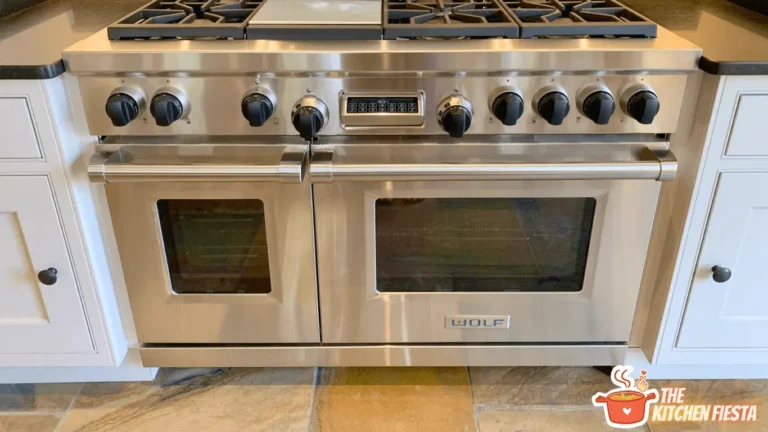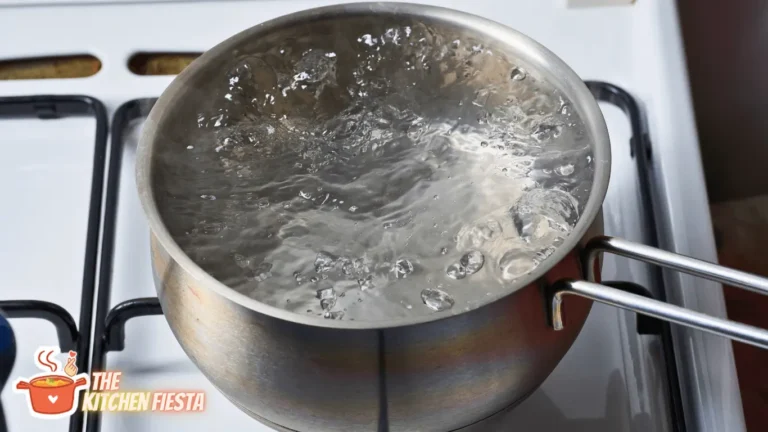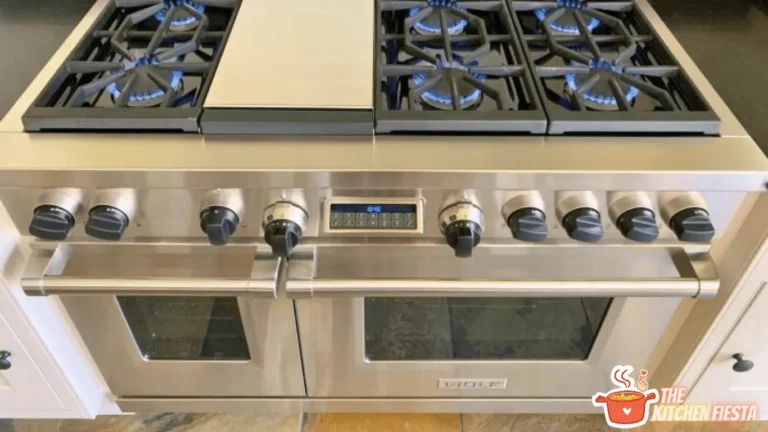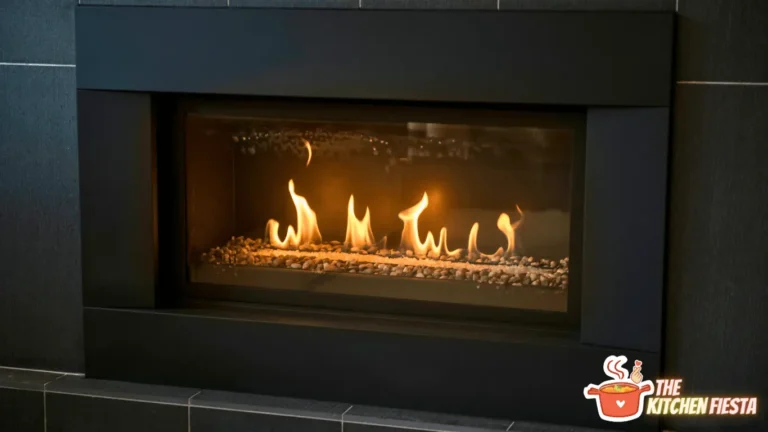Gas Stove Suddenly Has Orange Flame? Here’s Why
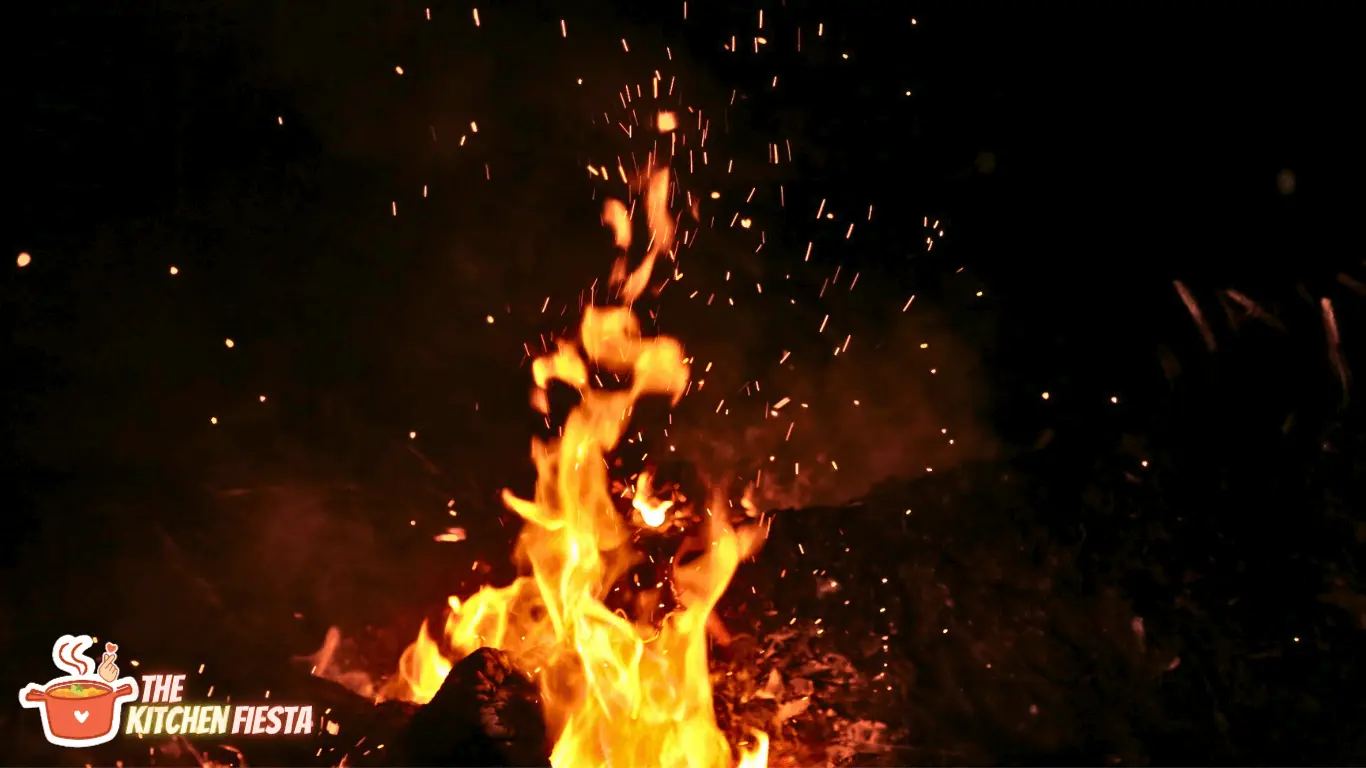
Gas stoves are a common appliance in many households. They are reliable and efficient, making them a popular choice for cooking. However, if you suddenly notice an orange flame on your gas stove, it can cause concern.
An orange flame on a gas stove can indicate incomplete combustion, which produces carbon monoxide as a byproduct. This can be dangerous and lead to adverse health effects. There are several reasons why a gas stove may suddenly have an orange flame, including clogged burners, food spillage, increased humidity, or incorrect installation.
It’s essential to address the issue promptly and take the necessary measures to fix it. In this article, we will explore the reasons why a gas stove may suddenly have an orange flame and provide some quick solutions to help you fix it. By understanding the problem, you can take the necessary steps to ensure the safety of yourself and your family while using your gas stove.
What are Gas Stove Flames?
Gas stoves are a popular choice for cooking in many households due to their convenience and efficiency. However, it is essential to understand the different types of flames produced by a gas stove burner.
The flame of a gas stove burner can be blue, yellow, or orange. A blue flame indicates complete combustion, meaning that the gas is burning efficiently and enough oxygen is in the air. On the other hand, a yellow or orange flame indicates incomplete combustion, which means that the gas is not burning efficiently and there is insufficient oxygen in the air.
An orange flame on a gas stove can be caused by several factors, including clogged burners, food spillage, increased humidity, or even incorrect installation. Inadequate air supply can also cause an orange flame. A proper air-to-gas mixture is essential for achieving a clean blue flame. When there is an insufficient air supply, the gas cannot burn completely, producing carbon soot and an orange flame.
It is important to note that an orange flame can cause health issues and reduce the effectiveness of your stove. Carbon monoxide, a toxic gas, can be produced during incomplete combustion, leading to adverse health hazards. Therefore, it is essential to address the issue promptly to ensure that your gas stove is operating safely and efficiently.
Causes of Orange Flame in Gas Stoves
Gas stoves are a common household appliance used for cooking. However, sometimes, the flame on the gas stove can turn orange, which is a cause for concern. There are several reasons why a gas stove might have an orange flame. This section will discuss the most common causes of an orange flame in gas stoves.
1. Gas Supply Issues
One of the most common causes of an orange flame in a gas stove is a problem with the gas supply. If the gas supply is restricted or blocked, it can cause incomplete combustion, resulting in an orange flame. This problem can occur for various reasons, such as a damaged gas line, low gas pressure, or a malfunctioning gas regulator.
2. Burner Cap Misalignment
Another common cause of an orange flame in a gas stove is burner cap misalignment. Burner caps are an essential component of a gas stove and must be correctly aligned to ensure proper combustion. If the burner caps are not correctly aligned, it can cause incomplete combustion, resulting in an orange flame. This problem can occur for various reasons, such as a loose burner cap, food debris, or wear and tear.
3. Dirty Burners
Dirty burners are another common cause of an orange flame in a gas stove. Over time, burners can become clogged with food debris, grease, and other particles, which can cause incomplete combustion and result in an orange flame. This problem can occur for various reasons, such as poor cleaning habits, inadequate maintenance, or a lack of proper ventilation.
Implications of Orange Flame
When a gas stove suddenly has an orange flame, it can indicate that the combustion process is incomplete. This can lead to several implications, including a drop in efficiency and potential safety hazards.
Efficiency Drop
An orange flame can cause a drop in the efficiency of the gas stove. This is because incomplete combustion produces carbon monoxide, a toxic gas that can lead to adverse health effects. Moreover, a not blue flame can also mean that the stove is not burning fuel as efficiently as it should. This can lead to a higher gas bill, as more gas is needed to produce the same heat.
Potential Safety Hazards
An orange flame can also pose potential safety hazards. Carbon monoxide is a colorless and odorless gas that can cause high concentrations of headaches, dizziness, nausea, and even death. Therefore, ensuring that the gas stove is functioning correctly and the flame is blue is essential. In addition, an orange flame can also indicate that there is a gas leak or a problem with the gas supply. This can be dangerous, as gas leaks can lead to explosions or fires.
It is essential to take immediate action if an orange flame is detected on a gas stove to prevent these potential hazards. This can include cleaning the burners, checking for gas leaks, and ensuring the gas supply functions correctly. It is also recommended to have a professional inspect the gas stove regularly to ensure it functions correctly and safely.
Troubleshooting Orange Flame
If you notice an orange flame on your gas stove, it is essential to troubleshoot and fix the issue as soon as possible. An orange flame indicates incomplete combustion, which can lead to the emission of harmful gases like carbon monoxide. Here are some steps to help troubleshoot and fix the issue:
1. Checking Gas Supply
The first step is to ensure that the gas supply is sufficient and not interrupted. Check the gas valve and make sure it is fully open. If the gas valve is partially closed, it can lead to incomplete combustion and orange flames. Also, check the gas meter to ensure enough gas supply. If the gas supply is low, it can lead to incomplete combustion.
2. Cleaning the Burners
Dirty burners can cause incomplete combustion and orange flames. Turn off the gas supply and remove the grates and burner caps to clean the burners. Use a soft brush or a toothbrush to clean the burner ports and remove debris or grease. You can also use warm water and dish soap to clean the burners. After cleaning, rinse the burners with water and let them dry completely before reinstalling them.
3. Adjusting the Burner Cap
If the burner cap is not properly adjusted, it can cause incomplete combustion and orange flames. To adjust the burner cap, turn off the gas supply and remove the burner cap. Check the cap for any debris or damage. If the cap is damaged, replace it with a new one. If the cap is not damaged, adjust it by turning it clockwise or counterclockwise until it is correctly aligned with the burner ports. After adjusting the cap, reinstall it and turn on the gas supply.
By following these troubleshooting steps, you can fix the issue of orange flames on your gas stove. If the issue persists, it is recommended to call a professional technician to inspect and repair the stove.
When to Seek Professional Help?
If the gas stove continues to produce orange flames even after following the cleaning and maintenance tips, it’s time to seek professional help. Here are some situations where calling a professional is necessary:
- Strong gas smell: If a strong smell of gas comes from the stove, turn off the gas supply immediately and call a professional. This could indicate a gas leak, which is a severe safety hazard.
- Flickering flame: If the flame on the gas stove flickers or dances, it could mean a problem with the burner or gas supply. A professional can diagnose and fix the issue.
- Soot buildup: If there is a significant amount of soot buildup on the burners or in the stove, it’s best to call a professional to clean it. Soot buildup can be a fire hazard and affect the stove’s efficiency.
- Unusual noises: If the gas stove makes unusual noises, such as popping or hissing, it could mean a problem with the gas supply or the burner. A professional can identify the issue and fix it.
If the gas stove produces orange flames and the cause is not immediately apparent, it’s best to call a professional. They can diagnose and fix the issue, ensuring the stove is safe to use and operating efficiently.
Conclusion
In conclusion, an orange flame on a gas common problems for stove that various factors can cause. The most common cause of an orange flame is a clogged burner, which can lead to soot buildup and reduce the efficiency of the stove. Other possible causes include food spills, increased humidity, and poor installation.
Fortunately, several simple solutions exist to fix an orange flame on a gas stove. These include cleaning the burner, ensuring all burners are placed correctly, and checking for gas leaks. It is important to note that if the problem persists, it may be necessary to call a professional for repair or replacement.
Maintaining a gas stove and promptly addressing any issues can help ensure safe and efficient operation. Following the tips and advice provided in this article, homeowners can keep their gas stoves in top condition and avoid the potential hazards of an orange flame.
Frequently Asked Questions
Why is my gas stove suddenly orange?
If your gas stove suddenly produces orange flames, it could be due to various reasons. Common reasons include clogged burners, food spillage, increased humidity, or even incorrect installation. Identifying the cause of the orange flames is essential to fix the issue properly.
Why are my flames orange instead of blue out of my burner?
Gas flames on a stove should typically be blue. However, if your flames are orange instead of blue, it could mean that there is incomplete combustion of the fuel. This can be caused by inadequate oxygen supply, high humidity in the surrounding air, soot building leading to stove clogs, or poor fuel economy.
What color flame is carbon monoxide?
Carbon monoxide is a colorless and odorless gas that is produced when there is incomplete combustion of fuel. It does not have a color flame, but it can be dangerous and even fatal when inhaled in high concentrations.
Is an orange flame on a gas stove dangerous?
An orange flame on a gas stove can be dangerous if it is caused by incomplete fuel combustion. This can produce carbon monoxide, a toxic gas that can be harmful or even fatal when inhaled in high concentrations. Fixing the issue as soon as possible is essential to avoid potential health risks.
How do you fix an orange flame on a gas stove?
To fix an orange flame on a gas stove, it is essential to identify the cause of the issue first. This could be due to clogged burners, food spillage, increased humidity, or incorrect installation. Once the cause is identified, the issue can be fixed by cleaning the burners, adjusting the air shutter, or replacing faulty parts.
How to Fix the Orange Flame on a Gas Stove?
Following the manufacturer’s instructions is essential to fix the orange flame on a gas stove. This could involve cleaning the burners, adjusting the air shutter, or replacing faulty parts. It is essential to ensure the gas stove is installed correctly and maintained to avoid potential safety hazards.


